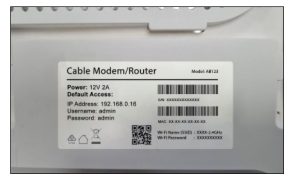192.168.0.16 is a private IP address that allows you to access, manage, and customize devices like routers, printers, and computers within your local network.
192.168.0.16 Private IP Address 192.168.0.16 private IP address is used to access and configure routers or networking devices. It is within the IPv4 address range that has been set aside for private networks and is therefore inaccessible from the larger internet. Whether you are configuring a router, resolving a network issue, or even modifying your Wi-Fi settings, knowing how to work with 192.168.0.16 will be a great advantage to you.
What is 192.168.0.16?
192.168.0.16 is an IP address used in private networks, its a private type IP which used for homes, and private organization networks. It’s part of the IP address range 192.168.0.0 through 192.168.255.255, reservation exclusively given to private networks by the Internet Assigned Numbers Authority (IANA).
This address can be given to multiple devices on a network including:
-
Routers (acting as the gateway for all network traffic)
-
Networked printers
-
Smart home devices (like IP cameras, smart TVs, or thermostats)
-
Computers or servers
Devices such as those assigned an IP like 192.168.0.16 can communicate with other devices inside the same network freely without needing access to the public internet. This internal communication is quick, safe, and free from outside networks, allowing privacy and security to remain in place.
But 192.168.0.16 is in a private range, and devices using it cannot be directly contacted from the internet. Your network allows internet access through a process known as Network Address Translation (NAT). NAT allows many devices in a local network to use a single IP address belonging to a public network (usually the internet).
Also, it’s noteworthy that private IP addresses such as 192.168.0.16 are not globally unique. This means that there could be a device on your home network with the IP address 192.168.0.16. Someone, in another house, city or country, might even have the same doors in their house coded to their various devices using 192.168.0.16 —no problem.
This is effective because private IP address ranges do not communicate directly with one another over the public internet, and are otherwise isolated within their local networks. Basically, 192.168.0.16 is comparable to a “street address” for a device in its area (your private network), however, its unreachable for the other part of the world unless configured accordingly (like port forwarding).
How to Login to 192.168 0.16?

If your router or device uses 192.168.0.16 as its IP address, here’s how you can log in:
-
Connect to the Network
Ensure that your computer, phone, or tablet is connected to the network — either via Wi-Fi or an Ethernet cable. -
Open a Browser
Launch your web browser (like Chrome, Firefox, or Edge). -
Enter the IP Address
In the address bar, type:http://192.168.0.16and press Enter. -
Login Page Appears
You should see a login screen asking for a username and password.
If the page doesn’t load:
-
Make sure the device you are trying to reach actually uses 192.168.0.16.
-
Check your connection.
-
Disable VPN or proxy if it’s active.
Default Username & Password for 192.168 0.16 IP address
| Username | Password |
|---|---|
| admin | admin |
| admin | (Check router label) |
| admin | password |
| admin | (Leave it blank) |
How to Change Your Wi-Fi Password and Network Name (SSID)
Modifying your Wi-Fi settings protects your network. Here’s how, once you’re logged in
- Login 192.168.0.16
– (Follow the login steps above.)
- Find Wireless Settings
– This usually can be found in a section called Wireless, Wi-Fi Settings, Wireless Setup, and so on.
- Change Network Name (SSID)
– Look for a field called SSID or Network Name.
– Enter your new Wi-Fi name.
- Change Wi-Fi Password
– Look for Security Settings.
– For WPA2 or WPA3 security, look for the Password or Passphrase field.
– Type in a robust new password (at least 8–12 characters and a combination of letters, numbers and symbols).
- Save Settings
– Click Save or Apply.
Your routers might have to reboot, and you’ll have to reconnect with the new Wi-Fi name and password.
